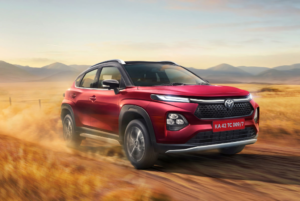
Sunroofs have existed since the 19th century and served a bigger purpose than aesthetics and letting someone feel like a main character of your favourite movie. Originally, open-roof cabins were designed to allow drivers to experience their natural surroundings. Soon, they quickly became a symbol of luxury. Prestigious brands like Bentley and Rolls Royce started offering tailor-made cars with sunroof options to allow owners to enjoy the breeze when driving.
Origin of Sunroofs
This might sound surprising, but sunroofs existed even before the invention of cars. They were present in horse-drawn carriages in the 19th century. The carriages had adjustable ventilation and sunlight control openings. Vehicles then evolved to have enclosed cabins and retractable roof panels to provide fresh air when needed, earning the term “sunroof.”
The vintage Coup de Ville had an open cabin for the driver. The open sections had partial roofs that could slide on to protect the driver during poor weather. The modern sunroof came into existence when more and more cars evolved into the sedan body type. It encouraged car makers to bring back the practicality of the Coup de Ville, and this gave rise to the “modern sunroof”. The first car with a sunroof was the Nash in 1937. It had a sliding metal panel, similar to the open cabins of earlier vehicles.
Sunroofs aren’t the only car feature attracting buyers nowadays. There is a constant debate about moonroof vs. sunroof. The main purpose of comparing the two was to understand which offers more practicality. While sunroof designs have been more common, the sunroof vs. moonroof distinction remains relevant in modern vehicle preferences.
Sunroof Trend in India

The demand to own a car with a sunroof has significantly increased in India. According to News18, as of 2024, approximately 25% of the new cars are now equipped with sunroofs, compared to just 7% in 2019. Even budget cars like the Maruti Brezza and Kia Seltos have a sunroof installation, a feature once exclusive to luxury cars.
Read More: Car Paint Sealant: Your Ticket to Showroom Shine
Gone are the days when car buyers mainly focused on the car’s functionality. The same priority is now given to premium features that provide an aesthetic appeal to the vehicle. A report by Mordor Intelligence shows that the Indian automotive sunroof market is expected to register a CAGR of over 15% between 2020 and 2025. In 2019, over 9,500 vehicles sold in India featured sunroofs, and this number is expected to increase. Panoramic glass ceiling rooftop is another car sunroof variation that is making profits in the car market. As disposable income rises, automakers are starting to introduce sunroof installation even in mid-range cars. Even though the practical use of sunroofs is limited in India’s market, what appeals to car buyers is its association with luxury and status.
Benefits of Sunroofs
There are several reasons why cars with a sunroof are gaining popularity among buyers. If you are considering buying a car with sunroof, take a look at the benefits that might convince you not to think much before spending some extra cash:
- Natural Light and Airflow: The natural light and airflow will give a spacious feel to your car and let in fresh air, reducing the need for air conditioning and enhancing comfort.
- Beautiful Views: It allows you to enjoy a delightful view of the surrounding scenery, making drives more enjoyable, especially road trips.
- Enhanced Aesthetics: Sunroofs add a sense of luxury and sophistication to your car, elevating its overall style.
- Better Resale Potential: Vehicles with sunroofs often have increased resale values, as many buyers consider them a desirable premium addition.
However, in countries with hot climate like India, these benefits may only be applicable sometimes. With scorching heat from March to August, using a sunroof can significantly raise the interior temperature of a parked car. While they might be enjoyable during cooler seasons or in regions like the mountains and Mumbai, the overall heat and safety concerns, especially with larger sunroofs, make them a less ideal choice for many Indian drivers.
Safety Issues

Along with the benefits, sunroofs also pose a threat to passengers’ safety, which should be taken into consideration before purchasing a car with sunroofs:
- Injury Risk: Sunroofs can shatter from external impacts, causing sharp shards to fall inside the vehicle, posing significant injury risks to passengers.
- Structural Integrity: Large sunroofs may make the vehicles’ structural integrity weak due to reduced roof strength, making them more vulnerable to roof collapse during rollover accidents.
- Child Safety: Sunroofs pose risks for young children. The mechanism might pinch small fingers, and they might mistakenly open them while the car is moving, leading to falls or injuries.
- Potential Distraction: Sunroofs may be distracting as they can divert the driver’s attention from the road, increasing the likelihood of accidents.
- Sunroof Ejection: In case of sudden stops or accidents, there is a risk of sunroof ejection. If the sunroof is already open or opens unexpectedly, passengers may be ejected from the vehicle, especially in rollover accidents, leading to a significant safety hazard.
Accidents Caused Due to Sunroofs
The case of Liza Hankins underscores critical safety concerns surrounding sunroofs in vehicles:
- Accident and Lawsuit: In 2005, 18-year-old Liza Hankins was involved in a crash in her 2000 Ford Expedition. She was permanently paralyzed due to a crash where she was ejected from her Ford SUV through a closed sunroof. Her parents pursued legal action against Ford, but the court ruled in Ford’s favour, citing the absence of government regulations for sunroof design.
- Sunroof Ejections: Between 2002 and 2012, approximately 230 fatalities and 500 injuries annually in the U.S. were associated with sunroof ejections.
- Shattering Issues: There have been numerous incidents where sunroofs shattered while driving. This raises alarms about their safety and the inadequate regulatory measures to protect consumers.
- Child Safety: In India, a concerning trend involves passengers, particularly children, leaning out of sunroofs. If a crash occurs, this behaviour may lead to severe injuries or even fatalities.
- Maintenance Costs: Along with safety concerns, sunroofs contribute to substantial maintenance expenses. The repair costs range from ₹3,000 to ₹100,000. Over time, sunroofs may develop leaks, further increasing the financial burden on vehicle owners.
Conclusion
Although sunroofs offer several appealing benefits, such as enhanced aesthetics and improved driving experiences, they also have notable safety risks and drawbacks, particularly in the Indian climate. The increasing popularity of cars with sunroof reflects a demand for luxury, but potential buyers must carefully consider safety concerns, maintenance costs, and suitability according to climate conditions.


